
Nibby Sunday – A Beloved Child Has Many Names
This post was originally published in Norwegian at pennenermektigere.no on April 19, 2020.
Fountain pen, reservoir pen, stylo plume, stilografica, self-filling pen. Fountain pens are called many things in different languages, and etymologically some of these terms have very different origins. In this post, we take a closer look at the different words used for fountain pens around the world.
The Italians call fountain pens “penna stilografica“. Elsewhere in the world, however, a stylograph is often described as a pen where the tip is a thin metal tube that leads the ink down to the paper, instead of a nib. Rotring Rapidograf and Isograf are examples of stylographs that are still available for purchase. These pens are often used for technical drawing and such things. So why do the Italians use this word to describe nib pens?

The first functional fountain pens (in the sense of “pen that can be filled with ink”) were actually stylographs, with thin metal tubes as points. These came almost ten years before the first proper fountain pens with nibs. Perhaps that is why these two pen variants have the same name in Italian. When De La Rue came out with their refillable nib pen in 1881, they even called it the “anti-stylograph”, to make it clear that this was a refillable pen, but that it was not a stylograph.
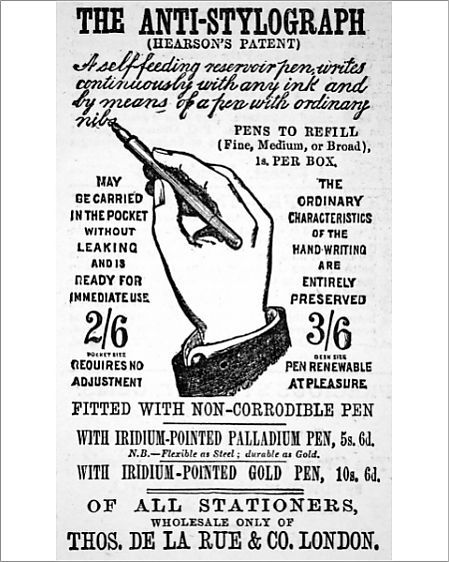
We have to take a look at the etymology here. “Stylus” is a Latin word, and was a sharp stick that was used to draw characters on wax or clay tablets in Roman times. The word is also often used to describe the needle that draws graphs on old scientific measuring instruments, such as seismographs. The needle on a record player is often also called a stylus, and the same applies to pens that can be used on touch screens. When it comes to styluses, it could be said that a beloved child doesn’t necessarily have many names, but a dear name certainly has many children.
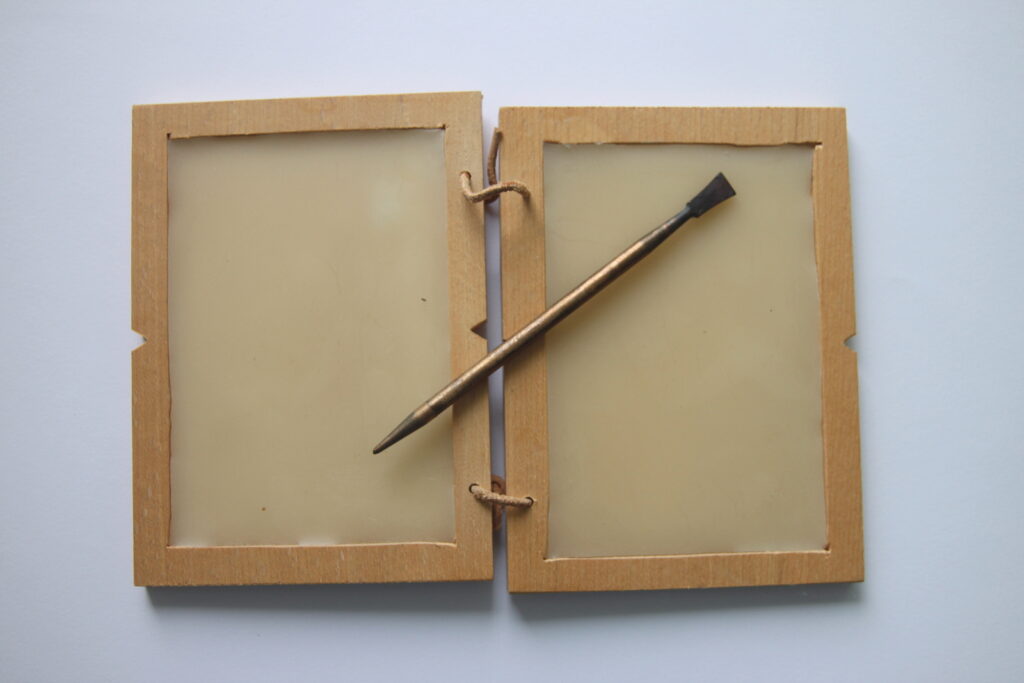
“Graph” is an old Greek word meaning “to scratch”, but it is often also interpreted as “to draw”. In other words, a stylograph is a tool, in the form of a stick or similar, which scratches or draws something. There is nothing in the etymology behind the term that would indicate it cannot be used for all kinds of writing implements, even though nowadays it is mostly only used for pens with thin metal tubes at the tip (unless you are in Italy, of course).
Speaking of stylus: the French call the fountain pen “stylo plume”. Stylo is, as mentioned, a stick you write with, and plume means feather. In early French fountain pen patents from the 19th century, you occasionally see the term “Plume sans fin”, or feather (in the sense of “pen”) without end, a term that refers to not having to constantly dip it in ink.
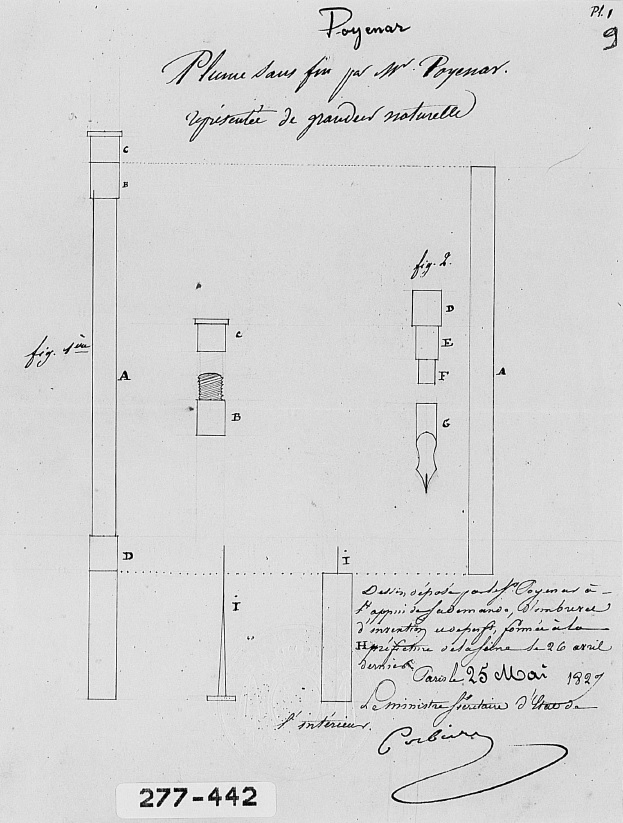
In Russian it is called Перьевая ручка, or “per’yevaya ruchka”, which simply means “feather pen”, and in German it is called “füllfederhalter”, or “filling feather holder”. But this is usually just abbreviated to “füller”. Federhalter is the German word for pen holder, and considering that the fountain pen was a natural development from this tool, it certainly makes sense to call it a filling pen holder.
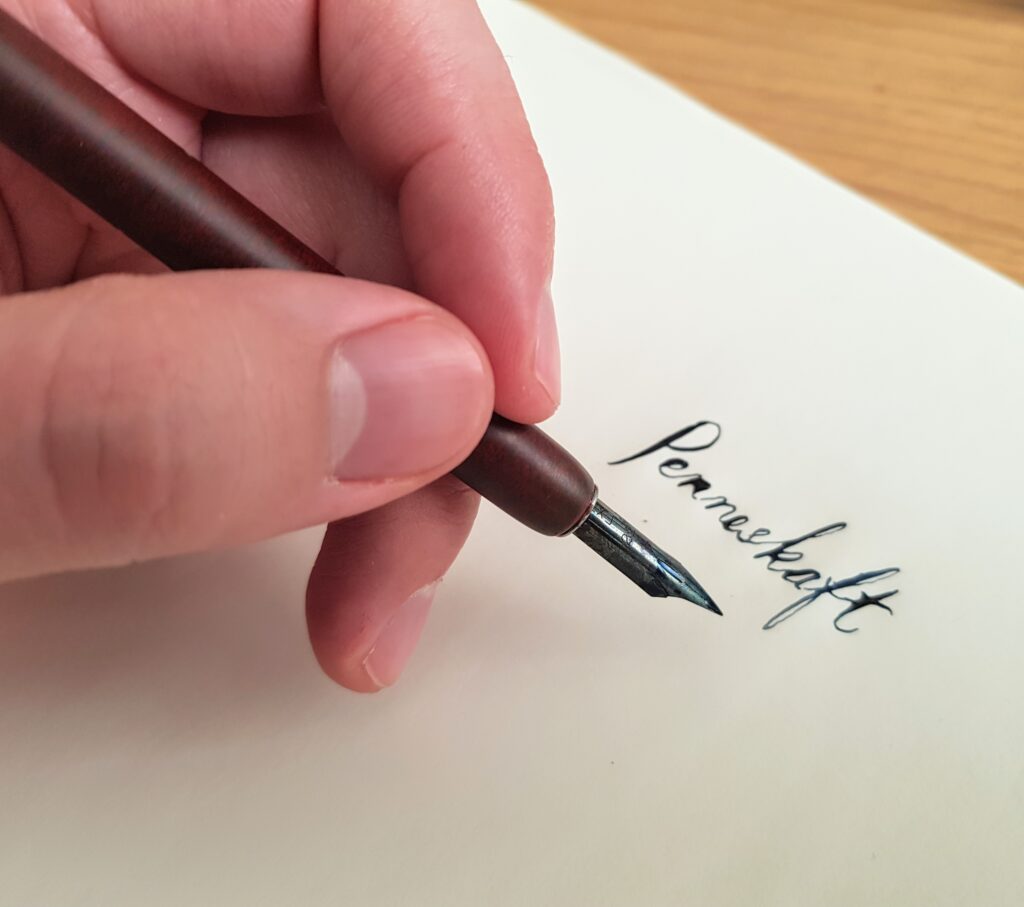
The word “pen” also comes from the Latin word “penna”, which means feather, or quill. So most of us actually kind of call our writing implements feathers. In English we use the word “quill” to describe pens made out of feathers, but in many languages, such as Norwegian, we say “feather pen”, which is basically a pleonasm.

The Japanese call fountain pens 万年筆, or “man’nenhitsu”. If you translate the three characters separately, you get something like “ten thousand year brush” or “eternity brush”. While we in Europe used quills for many hundreds of years, the Japanese (and for that matter many other Asian countries) used brushes to write. It is therefore not entirely unnatural that they have continued to use the term brush also for other types of pens, in the same way that many Western languages still refer to pens as quills or feathers. Ten thousand years – albeit an exaggeration – indicates that the fountain pen lasts a long time. It doesn’t wear out like a brush would, and you don’t have to dip it in ink every time you write. That way, the Japanese term is somewhat similar to the French “plume sans fin”. It should also be mentioned here that the Japanese do not actually have a separate word for “pen” . They have the loanword ペン, which is pronounced exactly as we pronounce “pen”. As the Japanese handwriting tradition is mostly about brushes, and not feathers, a separate Japanese word for pen was never developed.
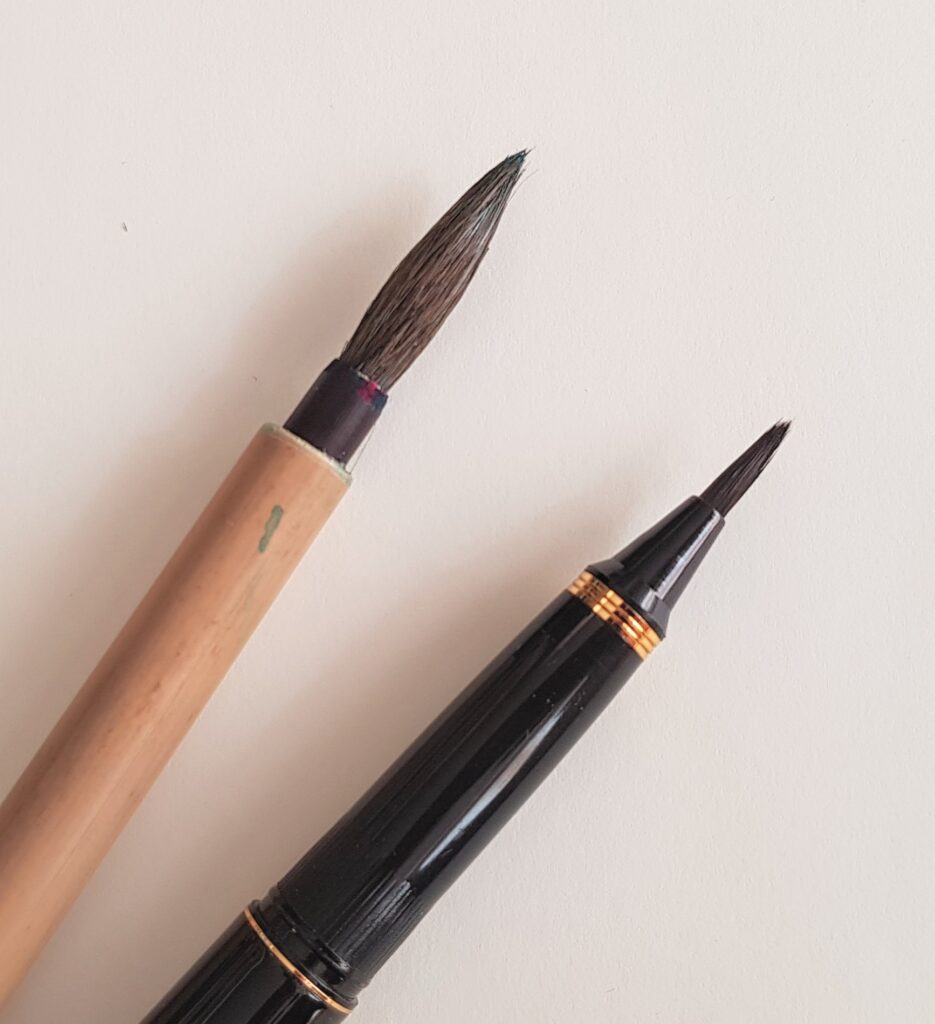
The Norwegian word “fyllepenn”, or “filling pen” is quite self-explanatory in and of itself. It is a pen that you can fill with ink. The Swedes call it a “reservoirpenna”, which refers to the fact that the pen holds a reservoir of ink. You can of course say that about almost all modern pens, including ballpoint pens and rollerballs, but when fountain pens came on the market a little over a hundred years ago, it was the pen holders, nibs and inkwells that people were used to writing with, and it therefore made sense to refer to the fact that the pen had a built-in reservoir of ink. “Reservoir pen” is often used in English as well, but mainly to describe early fountain pens that did not have a built-in filling mechanism, i.e. pens that only had a reservoir, but that you had to fill using a syringe or eye dropper. The terms “reservoir pen” and “fountain pen” were used somewhat interchangeably. The first fountain pens that came on the market with a built-in filling mechanism were often referred to as “self-filling fountain pens“, to make it clear that no other tool was needed than the pen itself, even during filling. “Self-feeding pen” was also widely used, but that is not in reference to a filling mechanism, but rather to the fact that the pen had a design that ensured it continuously fed the nib with ink, for example by utilizing an ink feed.
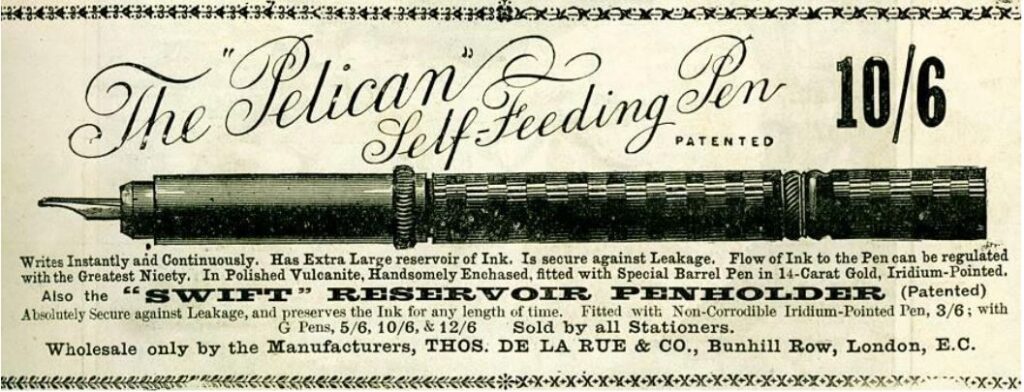
“Fountain pen” – what is the background for this term? Well, “fountain” comes from the Latin word “fontis”, which means “source”. The original definition of a fountain was “a natural source of water that collects in a pond“. Or a reservoir, if you will. In other words, “fountain pen” is just a fancy word for “reservoir pen”. It doesn’t really matter if the pen has a refill mechanism or not, as long as it has an ink reservoir. As the term does not indicate that the pen must be refillable, the term fountain pen can for example be perfectly used for pens such as the Pilot V-pen, which is a disposable pen with a nib. But when it runs out of ink, it cannot be refilled, and thus it is per definition wrong to call it a “fyllepenn” (filling pen) in Norwegian, even though “fyllepenn” is the established Norwegian translation of “fountain pen”. It’s a bit of a paradox. At the same time, we still go around referring to these tools as feathers (“pen” means “feather”, as you may remember). The words we use does not always keep up with development, so perhaps referring to the Pilot V-pen as a filling pen, even if it cannot be filled, is as close as we will get, at least in the Norwegian language.
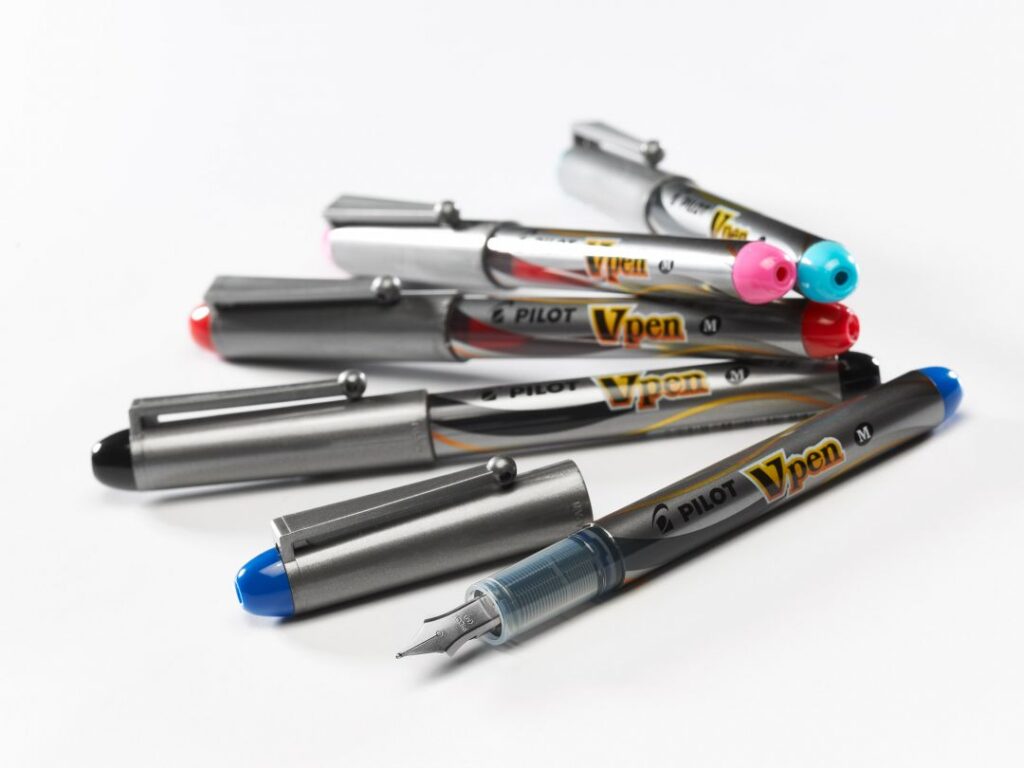
There are many different ways to describe the fountain pen, whether you refer to it as a feather pen, brush, self-filling pen, reservoir pen, stylograph or simply fountain pen, and there are probably many other terms out there as well. As we say here in Norway: a beloved child has many names. The fountain pen is certainly no exception.
Sources:
The Chronicle of the Fountain Pen (Pavão, Leite, Gagean)
Fountain Pens (Twydle)
Richardspens.com (Binder)
Vintagepens.com (Nishimura)
De La Rue Living Timeline
Patent – Petrache Poenarus «Plume sans fin»
Invented in Toledo – The Conklin Self-Filling Fountain Pen (Buchanan)
Wikipedia.org
Online Etymology Dictionary
Norsk etymologisk ordbok
Det norske akademis ordbok
Store norske leksikon
StackExchange – Japanese Language